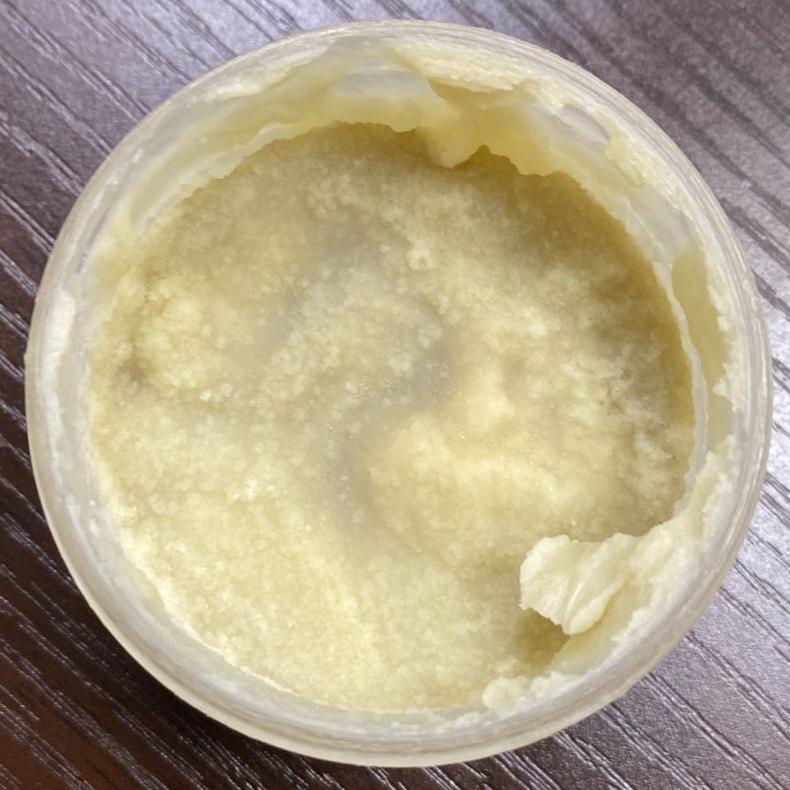:مقدمة
زبدة الشيا منتج طبيعي معروفة بخصائصها المغذية والمرطبة ، وتستخدم على نطاق واسع في منتجات العناية بالبشرة. ومع ذلك ، عندما تتعرض زبدة الشيا لتغيرات في درجة الحرارة ، مثل الذوبان والتبريد ، يمكن أن تظهر بقع أو عدم انتظام على سطحها في بعض الأحيان. دعونا نتعمق في الأسباب الكامنة وراء هذه الظاهرة.
:تركيبة زبدة الشيا
تتكون زبدة الشيا بشكل أساسي من أحماض دهنية مختلفة ، بما في ذلك حمض الشمع الدهني وحمض الأوليك وحمض اللينوليك. بالإضافة إلى احتوائه على فيتامينات ومضادات الأكسدة التي تساهم في خصائصه المفيدة للبشرة.
:عملية الذوبان
عندما يتم تسخين زبدة الشيا ، فإنها تخضع لتغيير في حالتها من الحالة الصلبة إلى الحالة السائلة. خلال هذه العملية ، قد تنفصل المكونات الموجودة داخل زبدة الشيا أو تتبلور بطريقة غير متساوية.
:آثار التغيرات في درجات الحرارة
يمكن أن يتسبب التسخين والتبريد لزبدة الشيا في تكوين بقع أو خطوط على سطحها. يحدث هذا عندما لا تتبلور المكونات الموجودة داخل الزبدة بشكل موحد ، مما يؤدي إلى ظهور البقع.

:مظهر البقع ليست مسألة جودة
من المهم ملاحظة أن هذه البقع أو الخطوط تكون عادةً أسباب مظهرية ولا تؤثر على الجودة أو الفعالية الكلية لزبدة الشيا. فهي غير ضارة ولا تشير إلى تلف أو تلوث.
:طرق للحصول على مظهر أكثر تجانس
إذا رغبت في ذلك ، يمكن إعادة إذابة زبدة الشيا وتبريدها مرة أخرى للحصول على مظهر أكثر نعومة. ومع ذلك ، قد يتطلب الأمر دورات تسخين وتبريد متعددة للحصول على نسيج موحد تمامًا.
كل دورة تساعد المكونات على إعادة التوزيع بالتساوي ، مما يقلل من ظهور البقع.
:مصادر لمزيد من البحث
لمزيد من المعلومات التفصيلية حول الخصائص الفيزيائية لزبدة الشيا وتأثرها أثناء تغيرات درجات الحرارة ، يُنصح بالرجوع إلى مصادر موثوقة أخرى مثل المقالات البحثية أو المجلات العلمية أو قواعد البيانات مثل ResearchGate و PubMed و The Journal of Oleo Science.
:الخلاصة
إن ظهور البقع على زبدة الشيا بعد الاذابة والتبريد أمر شائع بسبب فصل وإعادة بلورة مكوناتها. في حين أن هذه البقع غير ضارة ولا تؤثر على جودة الزبدة أو فعاليتها ، يمكن علاجها عن طريق تكرار عملية الذوبان والتبريد. يمكن أن يساعد فهم هذه الظاهرة من قبل المستخدمين على اتخاذ الحلول بعد معرفة السبب عند مواجهة مثل هذه البقع على زبدة الشيا
Understanding Spots on Shea Butter After Melting and Cooling
Shea butter is a natural product known for its nourishing and moisturizing properties, widely used in skincare products. However, when Shea butter is subjected to temperature changes, such as melting and cooling, it can sometimes develop spots or irregularities on its surface. Let's delve into the reasons behind this phenomenon.
The Composition of Shea Butter:
Shea butter is primarily composed of various fatty acids, including stearic acid, oleic acid, and linoleic acid. Additionally, it contains vitamins and antioxidants that contribute to its beneficial properties for the skin.
The Melting Process:
When Shea butter is heated, it undergoes a phase change from a solid state to a liquid state. During this process, the components within Shea butter may separate or recrystallize in an uneven manner.
Effects of Temperature Changes:
The heating and subsequent cooling of Shea butter can cause the formation of spots or streaks on its surface. This occurs when the components within the butter do not recrystallize uniformly, resulting in visible irregularities.

Visual Irregularities, Not Quality Issues:
It is important to note that these spots or streaks are typically cosmetic irregularities and do not affect the overall quality or effectiveness of the Shea butter. They are harmless and do not indicate spoilage or contamination.
Remedies for a Smoother Appearance:
If desired, the Shea butter can be remelted and cooled again to achieve a smoother appearance. However, it may require multiple heating and cooling cycles to obtain a completely uniform texture. Each cycle helps the components redistribute more evenly, reducing the appearance of spots.
Sources for Further Research:
For more detailed information on the physical properties of Shea butter and its behavior during temperature changes, it is advisable to refer to reliable sources such as research articles, scientific journals, or databases like ResearchGate, PubMed, and The Journal of Oleo Science.
Conclusion:
The appearance of spots on Shea butter after melting and cooling is a common occurrence due to the separation and recrystallization of its components. While these spots are harmless and do not affect the quality of the butter, they can be remedied by repeating the melting and cooling process. Understanding this phenomenon can help users make informed decisions when encountering such irregularities in Shea butter.


